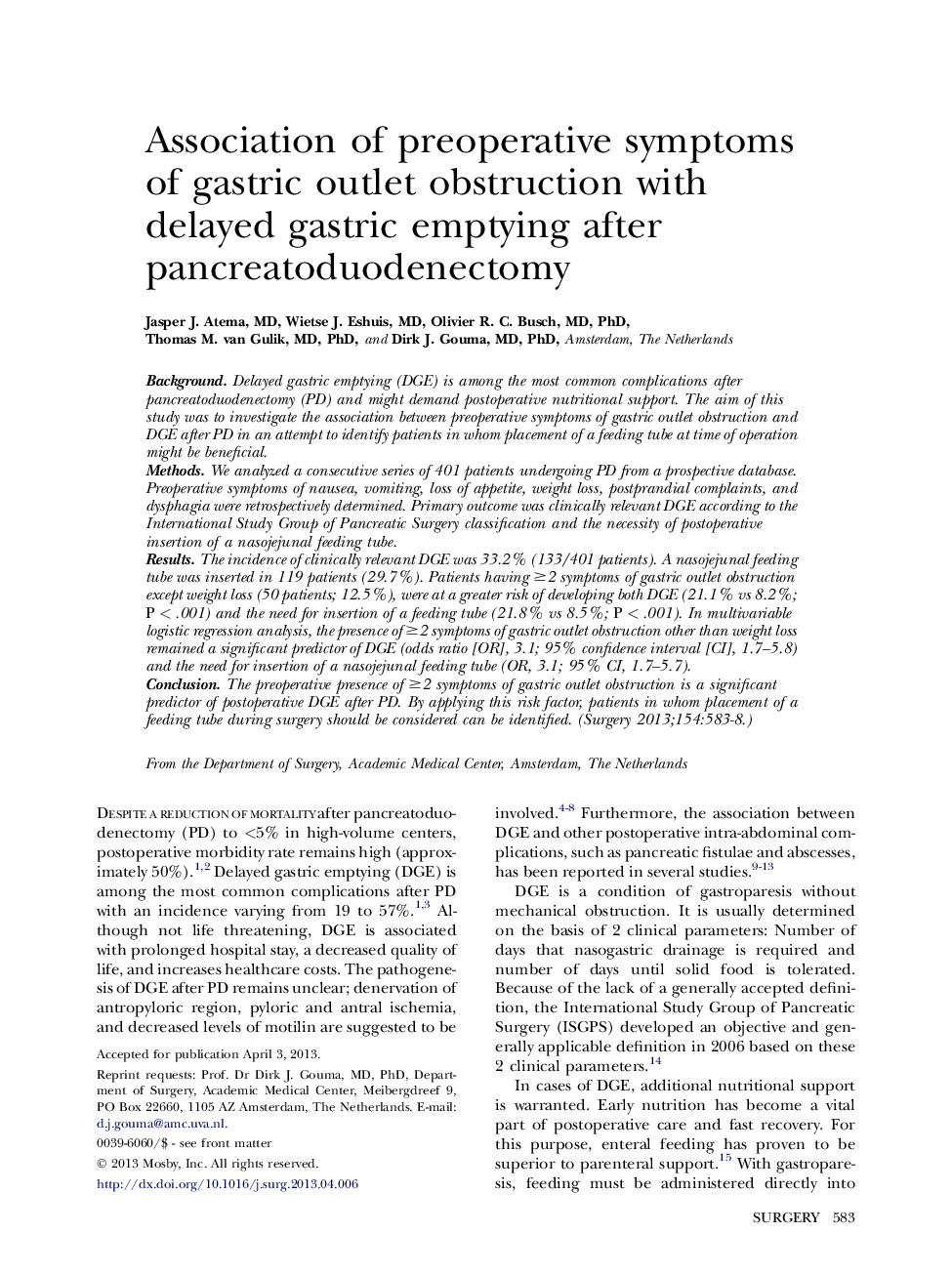| Article ID | Journal | Published Year | Pages | File Type |
|---|---|---|---|---|
| 6255237 | Surgery | 2013 | 6 Pages |
BackgroundDelayed gastric emptying (DGE) is among the most common complications after pancreatoduodenectomy (PD) and might demand postoperative nutritional support. The aim of this study was to investigate the association between preoperative symptoms of gastric outlet obstruction and DGE after PD in an attempt to identify patients in whom placement of a feeding tube at time of operation might be beneficial.MethodsWe analyzed a consecutive series of 401 patients undergoing PD from a prospective database. Preoperative symptoms of nausea, vomiting, loss of appetite, weight loss, postprandial complaints, and dysphagia were retrospectively determined. Primary outcome was clinically relevant DGE according to the International Study Group of Pancreatic Surgery classification and the necessity of postoperative insertion of a nasojejunal feeding tube.ResultsThe incidence of clinically relevant DGE was 33.2% (133/401 patients). A nasojejunal feeding tube was inserted in 119 patients (29.7%). Patients having â¥2 symptoms of gastric outlet obstruction except weight loss (50 patients; 12.5%), were at a greater risk of developing both DGE (21.1% vs 8.2%; P < .001) and the need for insertion of a feeding tube (21.8% vs 8.5%; P < .001). In multivariable logistic regression analysis, the presence of â¥2 symptoms of gastric outlet obstruction other than weight loss remained a significant predictor of DGE (odds ratio [OR], 3.1; 95% confidence interval [CI], 1.7-5.8) and the need for insertion of a nasojejunal feeding tube (OR, 3.1; 95% CI, 1.7-5.7).ConclusionThe preoperative presence of â¥2 symptoms of gastric outlet obstruction is a significant predictor of postoperative DGE after PD. By applying this risk factor, patients in whom placement of a feeding tube during surgery should be considered can be identified.
